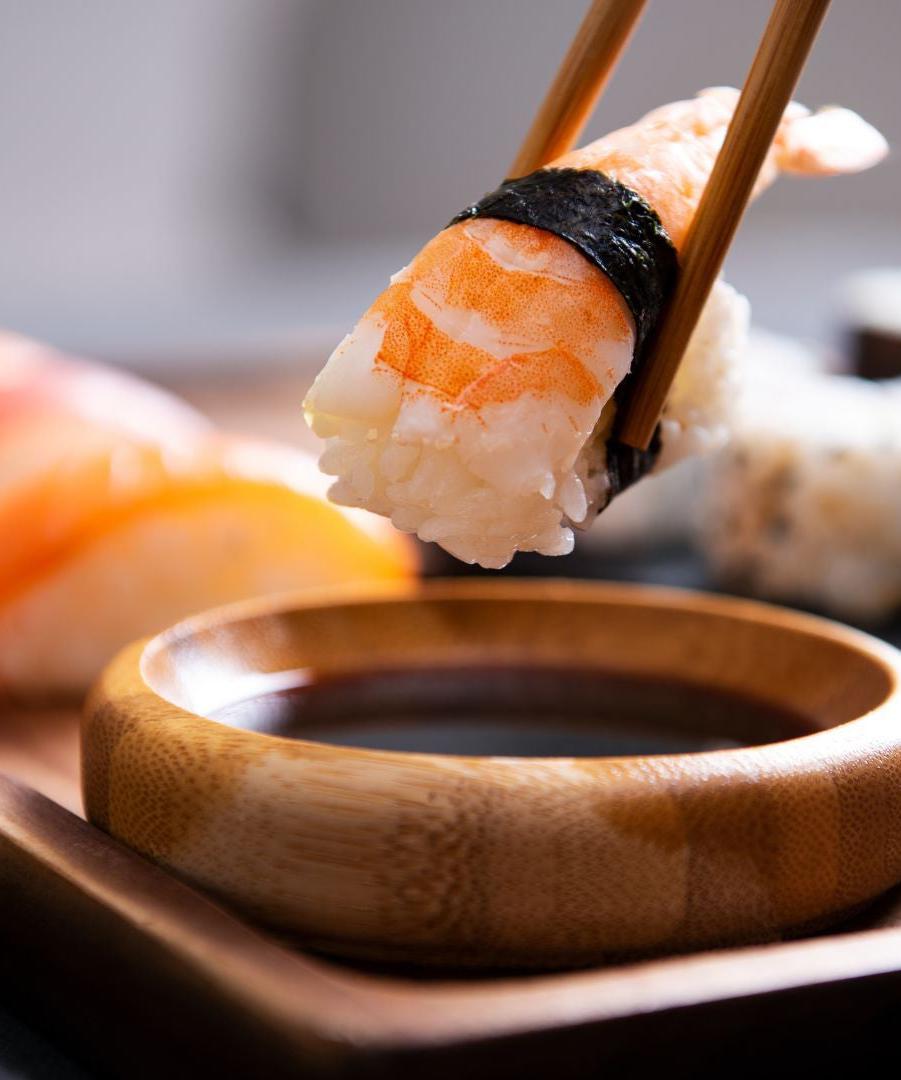Soy sauce, a staple in many kitchens, has a variety of types that may confuse even the most seasoned home cooks. Among these, the difference between light and dark soy sauce is often misunderstood. This article aims to provide an in-depth understanding of these two types of soy sauce, their characteristics, uses, and how they differ from each other.
What Exactly is Soy Sauce and How is it Made?
A Brief History of Soy Sauce
Originating from China over 2,500 years ago, soy sauce, or “Shoyu” as it’s known in Japanese, has a rich and storied history. Initially used as a way to stretch salt, a valuable commodity at the time, soy sauce quickly became a staple in Asian cuisine.
Over time, the use of soy sauce spread across the globe, and it’s now a ubiquitous ingredient in various culinary traditions, lending its unique, rich flavor to a multitude of dishes across various cuisines.
Basic Ingredients and Brewing Process
At its core, soy sauce consists of four main ingredients: soybeans, wheat, salt, and water. The traditional brewing process involves a fermentation stage, where a mold culture, Aspergillus, is added to a mixture of cooked soybeans and roasted wheat. This mixture, known as Koji, is then combined with a brine solution (water and salt) to kickstart the fermentation process, which can last from several months to a few years. The result is a rich, flavorful liquid that we know as soy sauce. This seemingly simple concoction is the result of time, patience, and careful dedication to maintaining an age-old tradition.
Unraveling the Characteristics of Light Soy Sauce
Light soy sauce, also referred to as Shoyu or Sheng Chou, is the most common type of soy sauce used in cooking and one of the many types explored in our Types of Soy Sauce guide. It’s characterized by its light, translucent brown color, thin consistency, and salty, umami flavor. Typically used to enhance the existing flavors of a dish, light soy sauce is an ideal choice for marinades, dressings, and dipping sauces. It’s also a common ingredient in Cantonese-style stir-fries, noodle dishes, and various other Asian recipes.
Understanding the Distinct Traits of Dark Soy Sauce
Dark soy sauce, or Lao Chou, is noticeably darker and thicker than Sheng Chou. Its rich, dark brown color is a result of a longer fermentation period and the addition of caramel and molasses, which also contribute to its slightly sweet, less salty flavor. Dark soy sauce is primarily used for its color, often lending a deep, glossy finish to dishes. It’s commonly used in stews, braises, and heavy stir-fries.
Easy Chart Of Main Differences Between Light and Dark Soy Sauce
Understanding the difference between light and dark soy sauce goes beyond just the color. Here’s a comparison of the two:
➡︎ Color: Light soy sauce has a light brown, almost amber colour, while dark soy sauce is deeper, with a rich, dark brown hue.
➡︎ Flavor: Light soy sauce has a stronger, saltier flavour. Dark soy sauce, on the other hand, is less sodium and has a sweet undertone due to the addition of caramel and molasses.
➡︎ Consistency: Light soy sauce is thinner and watery, while dark soy sauce has a thicker consistency.
➡︎ Production Process: Light soy sauce undergoes a shorter fermentation period compared to dark soy sauce.
➡︎ Culinary Applications: Light soy sauce is typically used as a seasoning or marinade, while dark soy sauce is often used in coloring dishes.
And importantly, this is just an overall comparison between Chinese dark soy sauce (Lao Chou) and Chinese light soy sauce (Sheng Chou), they are big categories in the soy sauce world. There are actually various soy sauces on the market to satisfy different needs, and each variety caters to different culinary needs and preferences. Discover how these products compare to those offered by other leading soy sauce companies.
For example, Low-sodium soy sauce, gluten-free soy sauce, and organic soy sauce are other healthy soy sauces for people with healthy eating habits. It’s perfect for those looking to reduce their sodium intake without sacrificing flavor. You can use it in the same way as regular soy sauce.
Pearl River Bridge a top soy sauce manufacturer since 1958, they carry different Chinese soy sauces, and also Japanese Soy Sauce you may looking for.
How Can You Use Light and Dark Soy Sauce in Cooking?
Remember, the variety of soy sauces available today provides an exciting opportunity to experiment and find your personal favorite. Understanding the difference between light and dark soy sauce allows you to harness their unique flavors and use them to their full potential in your kitchen adventures.
Picking light or dark soy sauce depends on what you’re cooking. Light soy sauce is salty and thin, so it’s good when you want to add a savory taste but not change the color of your food. It’s great for things like stir fries, marinades, and as a dipping sauce for dumplings or other foods.
Dark soy sauce is sweet, rich, and thick, which makes it great for food that needs a deep color and strong flavor. Use it for things like slow-cooked meals, stews, and hearty stir-fries.
Yet, for an exquisitely balanced medley of flavors, combining both light and dark soy sauce can work magic. The light soy sauce delivers a salty umami punch, while the dark variant introduces an appealing color, rounded off with a touch of sweetness. This concoction creates a multifaceted, intricate flavor profile that effortlessly takes your dish to a whole new gastronomic level.
Light Soy Sauce Dishes:
- Vegetable Stir-Fry: The robust flavor of light soy sauce beautifully enhances the fresh taste of the vegetables without overpowering them.
- Sushi or Sashimi Dipping Sauce: Its light flavor and a thin consistency make it a delicious and delicate accompaniment.
- Marinade for Chicken or Fish: Its umami-rich flavor works well as a marinade, accentuating the meat’s natural flavors.
- Fried Rice: Light soy sauce boosts the overall flavor of the dish without darkening the rice significantly.
Dark Soy Sauce Dishes:
- Braised Pork Belly: Its thick consistency and sweet, full-bodied flavor make it perfect for braising, adding rich, deep color and a layer of flavor.
- Soy Sauce Chicken: The dark soy sauce lends a beautiful caramelized color and an umami richness to the chicken.
- Stir-Fried Noodles: It gives the noodles an appealing dark color while adding a note of sweetness.
- Chinese BBQ Spare Ribs: Its molasses-like sweetness enhances the overall flavor profile, creating a perfectly balanced dish.
Dishes with Both Light and Dark Soy Sauce:
- Mapo Tofu: The mixture of both creates a beautifully rounded flavor, allowing the tofu to take on the savory, complex taste of the sauce.
- General Tso’s Chicken: Both sauces blend seamlessly to provide a deep, rich, and complex flavor to this popular dish.
- Kung Pao Shrimp: The light soy sauce provides the saltiness, while dark adds a sweet richness, achieving a marvelous balance in this spicy stir-fry.
Conclusion
In conclusion, knowing the difference between light and dark soy sauce can really step up your cooking game. Even though they seem alike, these two soy sauces are unique in their own ways and have specific uses. By picking the right one for each dish, you can discover new taste sensations in your cooking journey.
So, the next time you’re standing in the aisle of your local grocery store, contemplating which soy sauce to pick, keep in mind that light soy sauce is great for flavoring and marinades, and dark soy sauce can give a nice, shiny finish to your meals. Enjoy your cooking!




